Your source of science-based aquatic plant information
A team of university based aquatic plant management experts worked with environmental communication specialists to develop this content to help people feel more knowledgeable about aquatic plant management.
Aquatic plant management topics
Below are comment aquatic plant management topics. If you have you have additional questions, reach out using the contact us link.
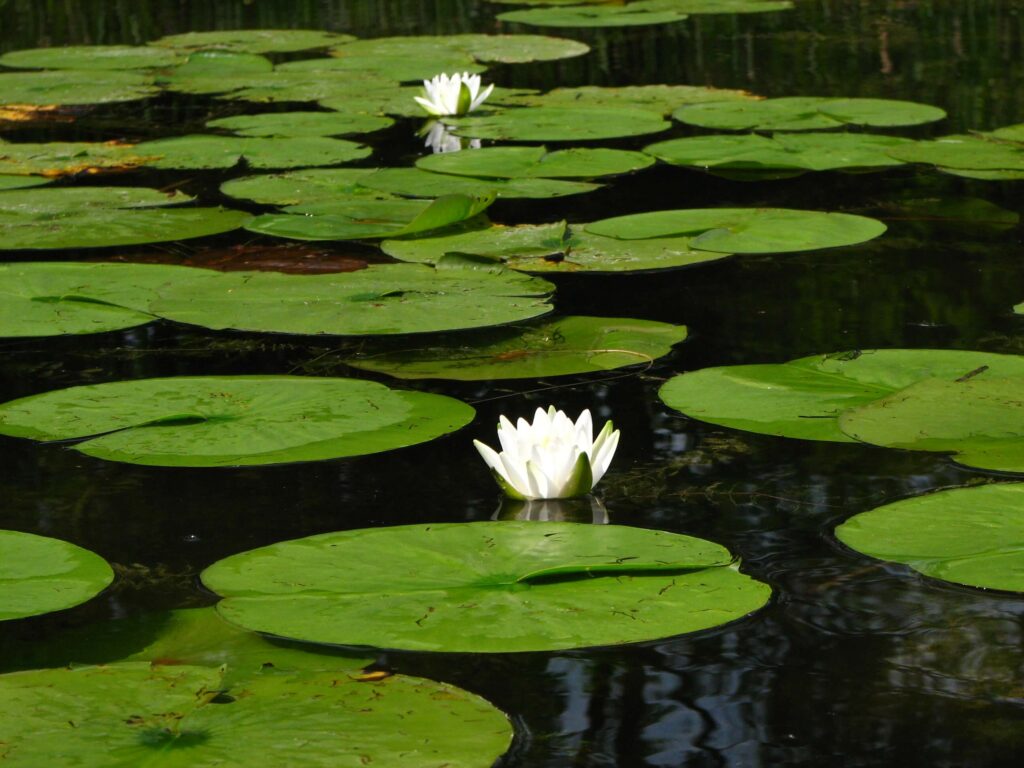
Introduction
Aquatic plants provide oxygen as a byproduct of photosynthesis, are a major food source for lake organisms, help stabilize bottom sediments, and help prevent shoreline erosion. Most aquatic plants in lakes are native, such as wild celery, coontail and large-leaf pondweed, while some are invasive species, such as curly leaf pondweed, Eurasian watermilfoil and starry stonewort. While most aquatic plant populations do not cause a problem, the natural density and distribution of aquatic plants in lakes and streams can become disrupted when either 1) excess nutrients (e.g. fertilizer) cause native or invasive plants to have abnormally high growth rates and/or 2) invasive aquatic plants are introduced and out-compete native plants.
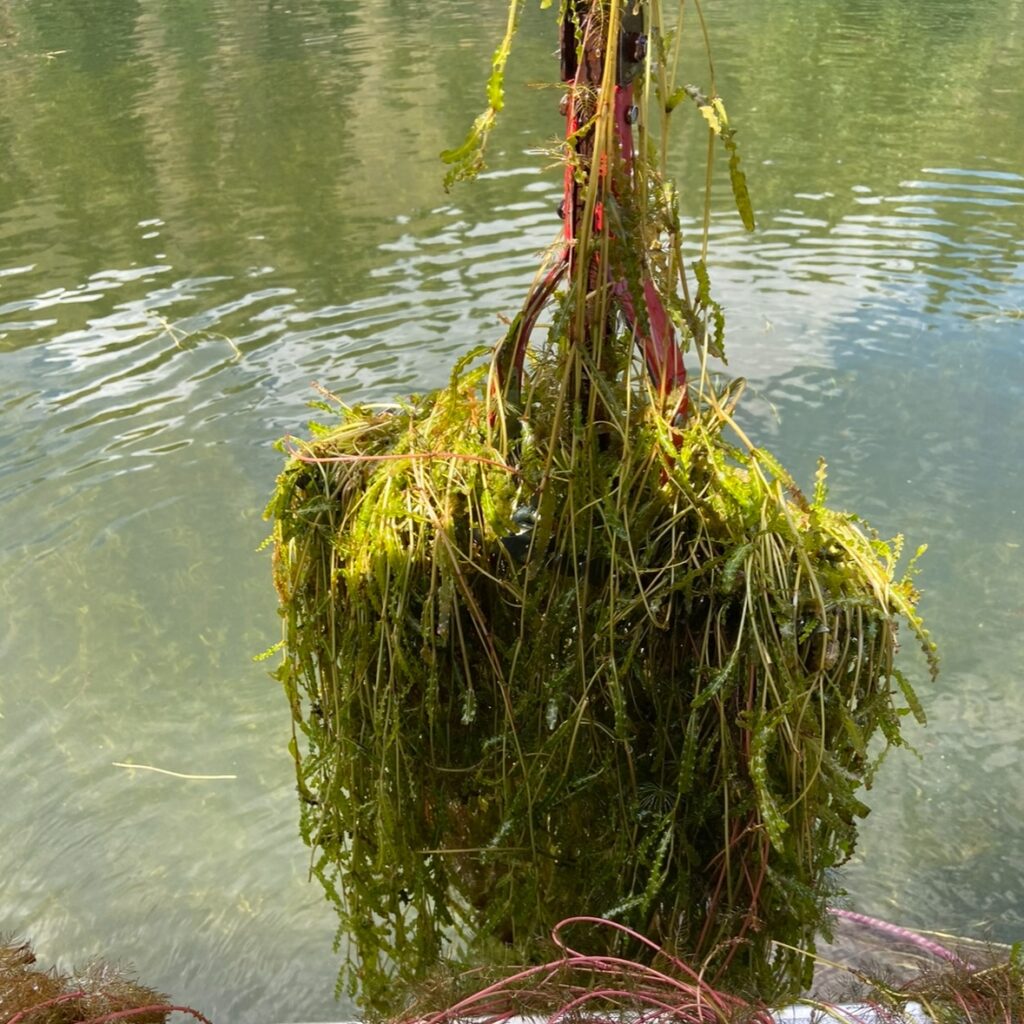
Aquatic Weeds
“Aquatic weeds” or “lake weeds” can be catch-all terms for aquatic plants and algae, including both native and non-native plants, that are unwanted for one or more reasons. While most lake users accept a certain level of aquatic plant growth, these plants may become “weeds” once they grow past a certain amount or grow in high-recreation areas. An internet search for “weeds in my lake” returns many products and services designed to remove and/or kill these weeds.
However, aquatic plants are important. Plants provide oxygen as a byproduct of photosynthesis, are a major food source for fish and other wildlife in the lake, help stabilize bottom sediments and help prevent shoreline erosion. More information is needed to determine if these aquatic plants should be controlled, and if so, how best to control them.
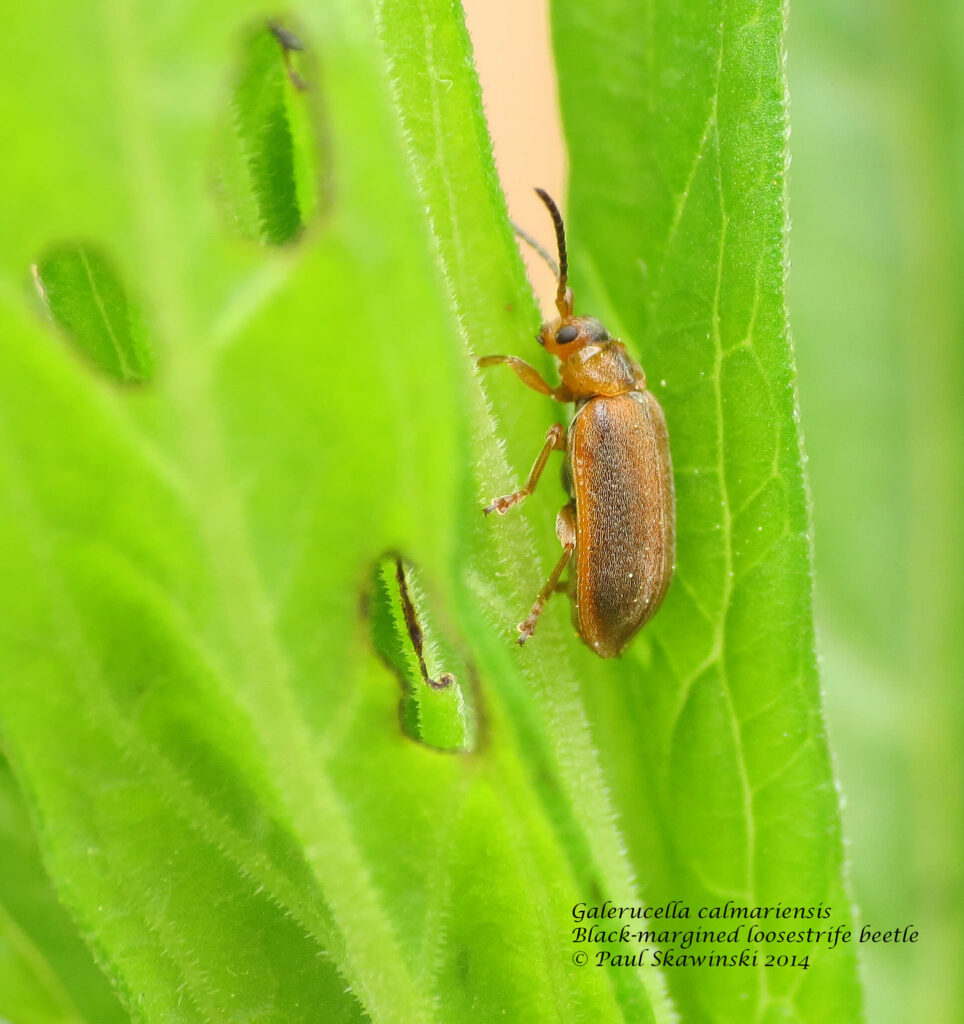
Biological Control
Biological control in this context can be defined as the introduction of a biocontrol agent (the organism that eats the invasive plant, usually a type of insect) into an area to reduce populations of invasive aquatic plants or unwanted species. The biocontrol agent has been identified based on its selectivity (that is, it only eats the invasive aquatic plant it has been selected for). One relevant example is the native milfoil weevil (Euhrychhiopsis lecontei) that has been used to control Eurasian watermilfoil. Herbivorous fish such as infertile grass carp have also been used to reduce plant growth. However, because grass carp feed on a wide range of aquatic plants, including beneficial native plants, they are prohibited by the majority of Great Lakes jurisdictions.
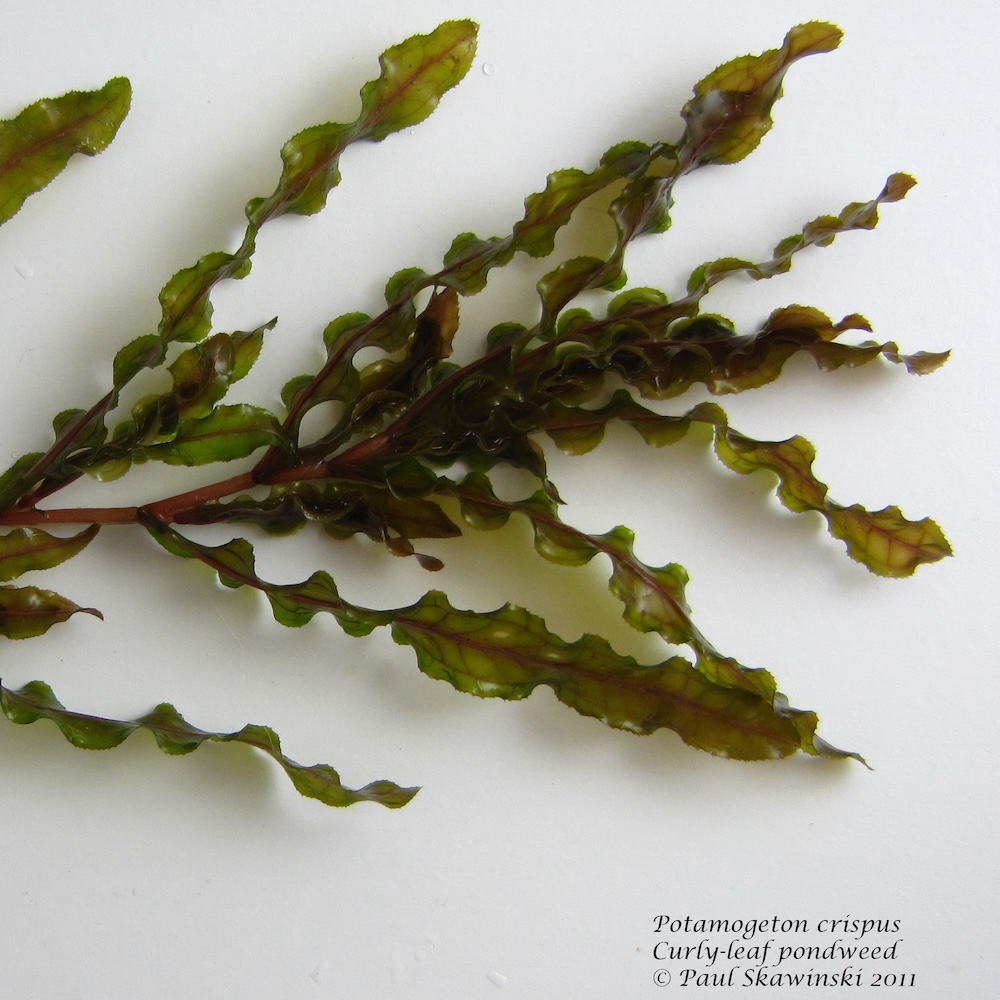
Curlyleaf Pondweed
In the Great Lakes region, some people call pondweeds “lake cabbage” or fishing weeds.” Curly leaf pondweed (Potamogeton crispus) is a submerged pond weed with roots. Its coloration varies from olive-green to reddish-brown. Wavy, lasagna-like leaves grow about a half-inch wide and 2-3” long. Curly leaf pondweed leaves have a mid-vein, “toothed” or serrated edges, and blunt tips. The main stem can vary in color like white, green, brown, and red. It tends to branch multiple times near the top of the plant. The underwater plant may mat at the surface but does not have true floating leaves. It is often the first pondweed to come up in the spring. It can flower, fruit, and produce turions (turions are reproductive structures that persist in the sediment – they look like small pinecones). This happens in June before dying back in mid-summer. Curly leaf pondweed looks similar to many native beneficial pondweeds found in lakes and rivers. It can be distinguished based on its serrated leaf edges.
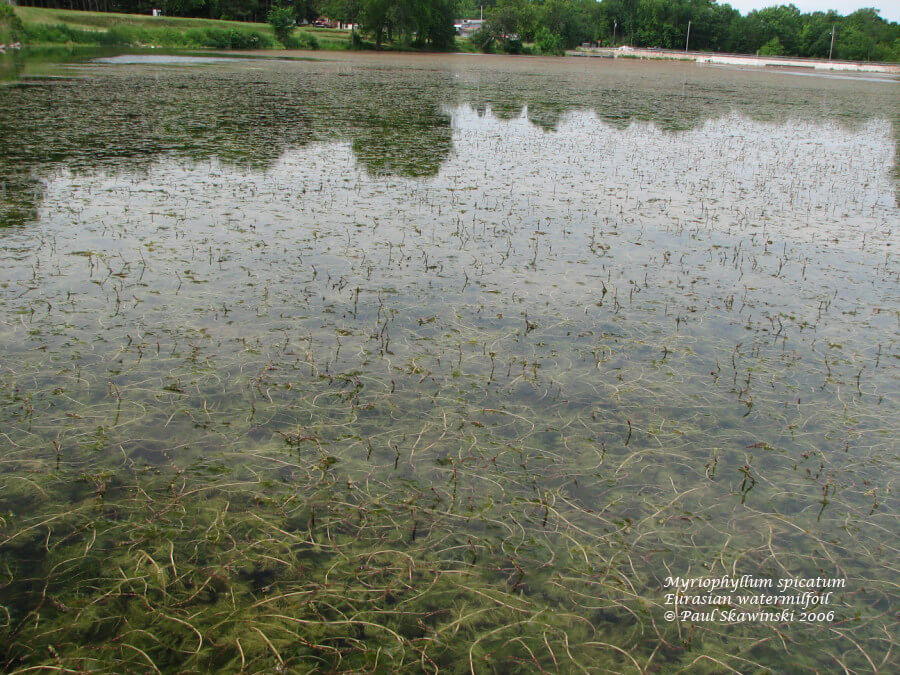
Eurasian Milfoil
Milfoil is a common name for Eurasian Watermilfoil. Many people call it simply a lake weed. Like many submerged plants, it has roots and spreads when parts of the plant break off. The fragments grow roots and become a new aquatic plant. It grows in depths of 3 to 9 feet, but underwater plants can grow deeper if the water is clear.
There are good and bad kinds of water milfoil in the waters of the Great Lakes area. This includes native and non-native milfoils that are related and look similar. The native milfoil is also called northern watermilfoil. It can breed with the nuisance non-native to make hybrid milfoil. Hybrid milfoils have traits of both the species. They may require genetic screening to distinguish them from non-hybrids. Both Eurasian and hybrid water milfoils can have unwanted impacts on the environment and recreation. The aquatic plants form dense beds that can block out beneficial native species and impair swimming, boating, and fishing.
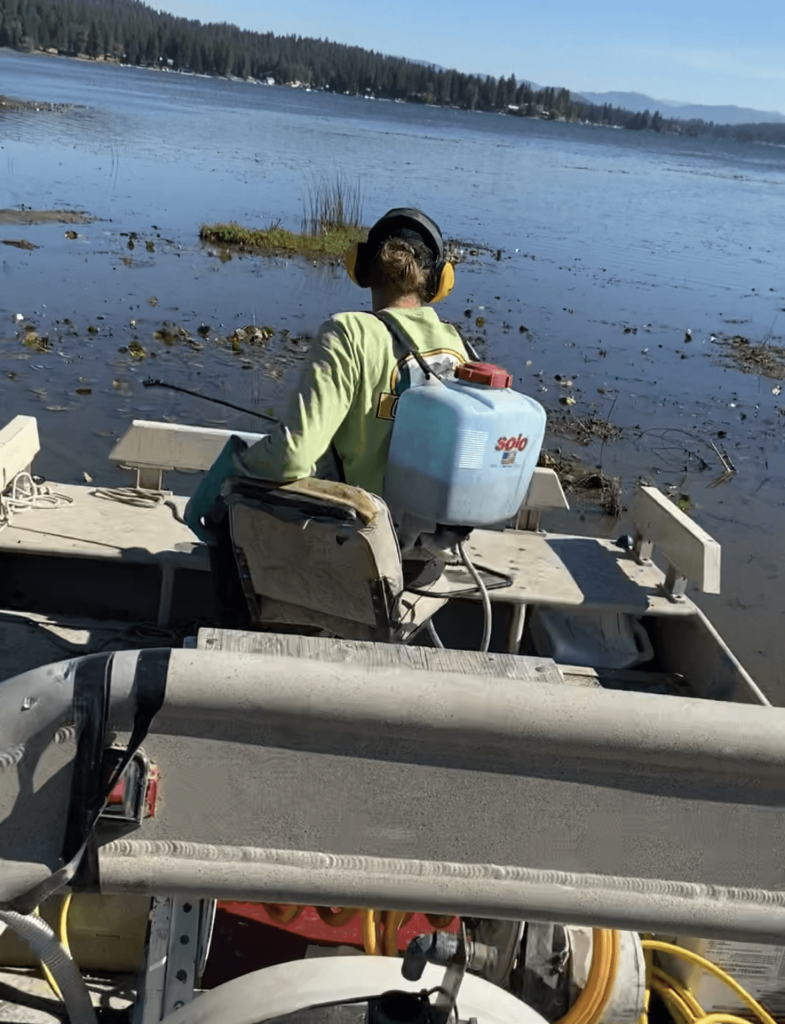
Herbicide Treatment
Herbicides are chemicals that have been designed to damage and/or kill plants. Examples of herbicides with formulations to be used in lakes are 2,4-D, triclopyr, diquat and fluridone (these are known by different trade names). The use of a newly developed herbicide, florpyrauxifen-benzyl (trade name, ProcellaCOR™) is increasing, as initial results indicate it is more effective on invasive plants and has fewer negative impacts on native plants.
Herbicides vary in several ways. One of the most significant is whether they work through contact (herbicide injures the plant tissue it touches) or systemic (herbicide is absorbed through leaves, stems or roots and moved through the plant). To the observer, contact herbicides appear more effective because plant damage occurs quickly (hours to days) while systemic herbicides take longer (days to weeks). Which herbicide is most appropriate, however, depends on many factors such as human water use, native species present, the specific invasive species and lake conditions (e.g., water movement, depth). A lake management service provider can help inform this decision.
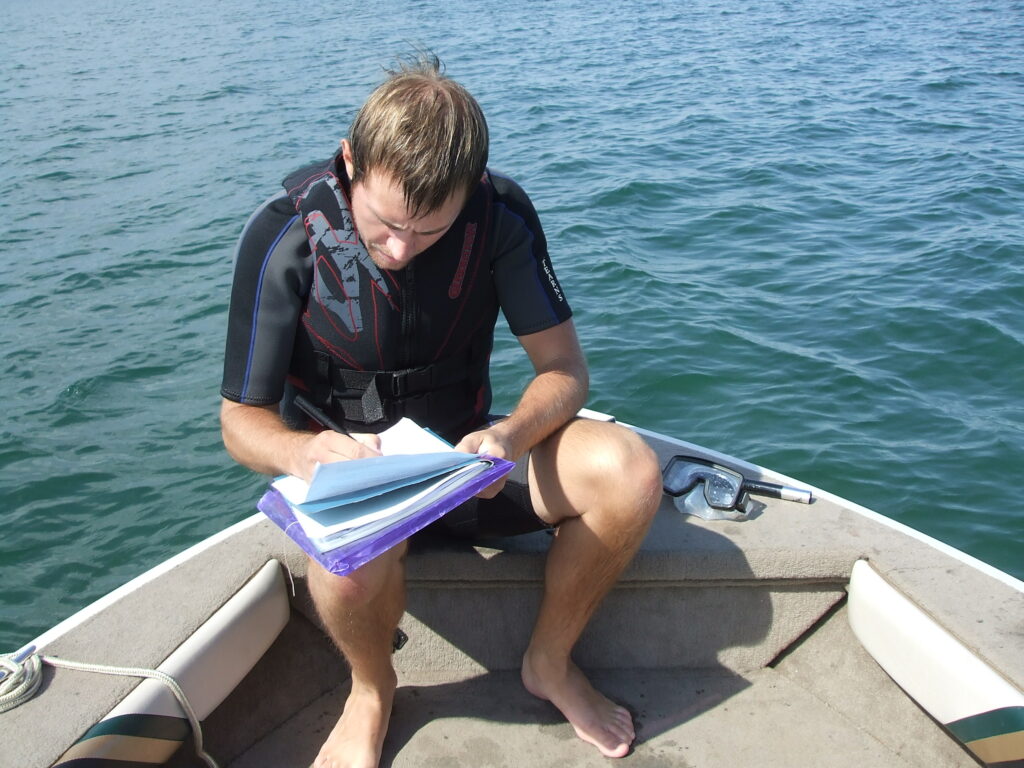
Management Plans
A lake management plan is a “whole lake” document. It points out goals for cultivating desired lake and watershed conditions for a time period. A lake management plan can include many things, but is often focused on an aquatic plant management plan. Management plans also inform decisions around treatment strategies. They help show which management strategies are appropriate. Examples are: mechanical, hand harvesting, drawdown, bottom barriers, pond dye, herbicides and algaecide. Longer-term management strategy examples are: biological control, nutrient/watershed management.
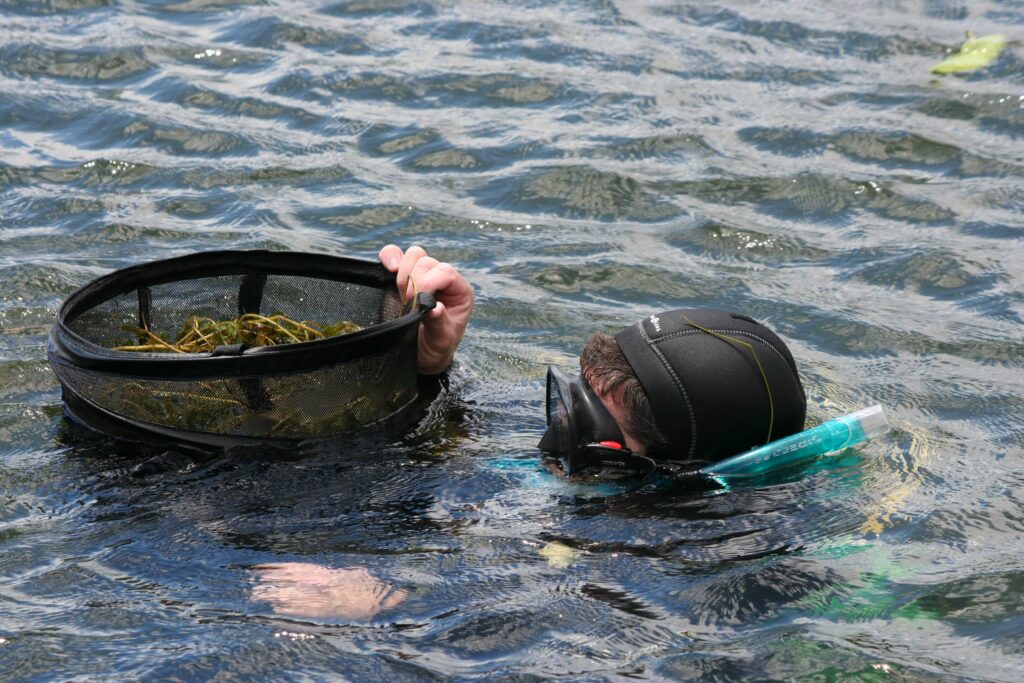
Mechanical Physical Methods
Mechanical and physical control methods are often presented together, though some organizations differentiate between mechanical (using a machine to cut/harvest or dredge/excavate) and physical (for example, placing bottom barriers or using water drawdowns). As a whole, these methods include cutting/harvesting, hand-pulling/diver-assisted suction harvesting, weed rollers, benthic barriers/shading, dredging/excavating and drawdown/flooding. There may be other less-common methods not presented here. Work with your lake management service provider to determine which methods are appropriate for your lake. The state’s natural resource agency is also a good resource for technical advice on the management of nuisance and invasive aquatic plants. In addition, some mechanical control methods described may require a permit. The benefits and drawbacks of each method are presented within each strategy’s description. A general advantage of these methods is not adding toxic and potentially persistent herbicides to the lake, which is generally better for native plants and wildlife and may fit better with community preferences.
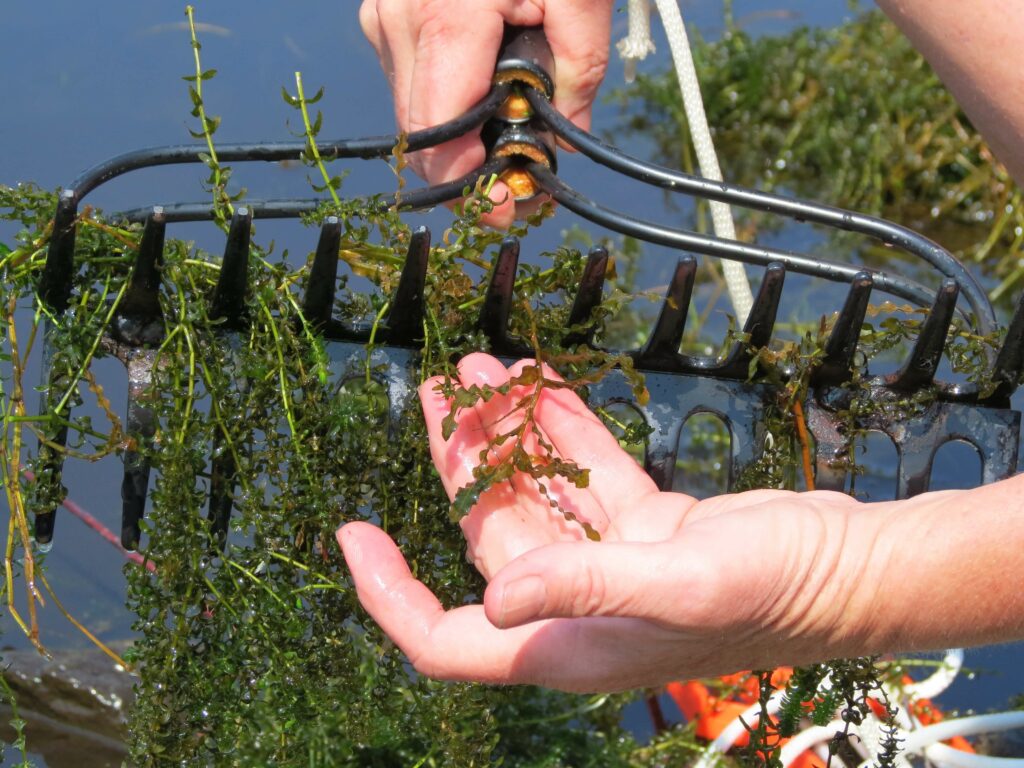
Monitoring
Monitoring is an important component of a plant management control effort. Aquatic plant monitoring is a routine (usually annual but sometimes more frequent) measurement of the characteristics of an aquatic plant population (e.g., how large an area, which species are present). A monitoring program should include not only an assessment of the distribution of the target invasive plant species but also an assessment of the beneficial native plant communities in the water body. Understanding the changes in a plant population will help determine 1) whether control efforts are needed and 2) if control efforts are undertaken, whether they are effective. There are many benefits of monitoring. Most monitoring programs include a water quality component, which is important in understanding the overall health and well-being of the lake. Specifically for aquatic plant management, monitoring not only provides information on the current status of aquatic plant populations (which plants and where they are) but also informs stakeholders of any changes in aquatic plant populations (if current populations are expanding, and if there are new plant species).
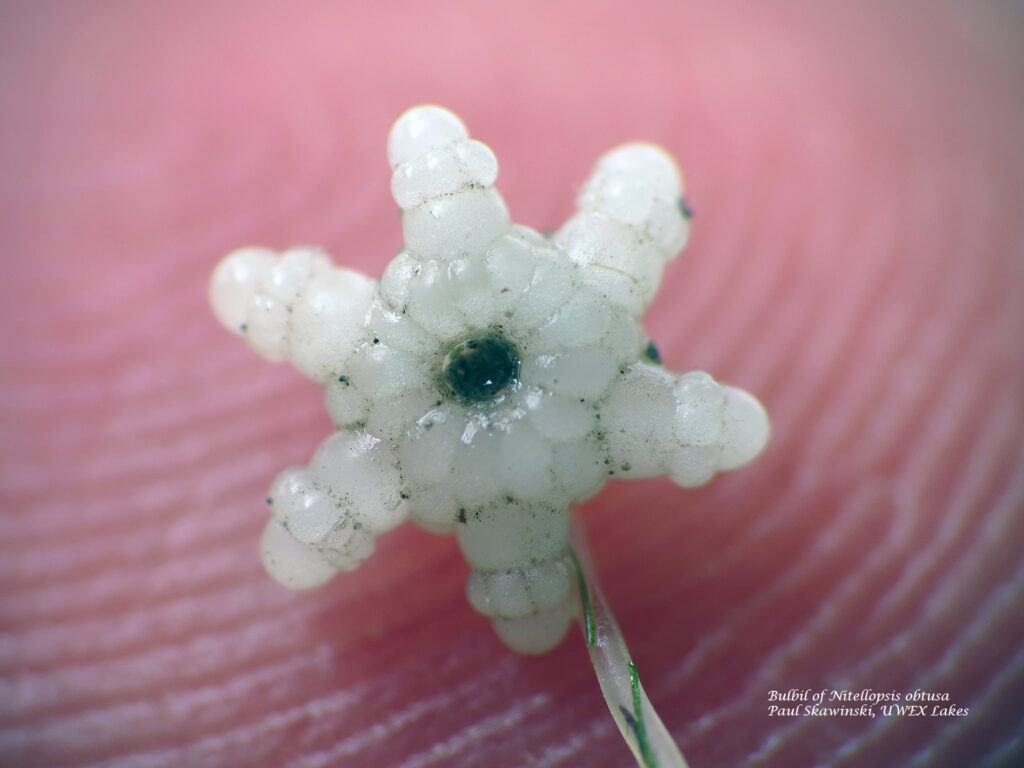
Starry Stonewort
Starry stonewort (scientific name: Nitellopsis obtusa) is a bushy, bright green macroalgae. It looks similar to many native, beneficial grass-like algae, such as other stoneworts and muskgrasses found in inland lakes but can be distinguished based on its production of star-shaped bulbils. These white, star-shaped bulbils (about the size of a grain of rice) form on clear threads at the base of the plant. A macro-algae like starry stonewort does not have a vascular system like true plants; each branchlet or stem is a single cell. Starry stonewort can spread from stem fragments and/or bulbils. It may form a dense carpet of material in shallow areas that may impede recreational activities and ecologically significant events, such as fish spawning areas, although the severity of ecological and recreational impacts are still under investigation.